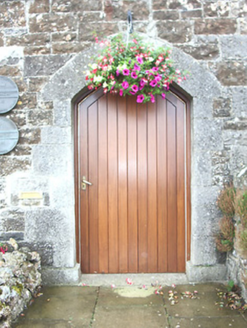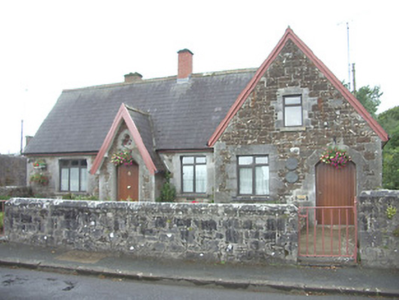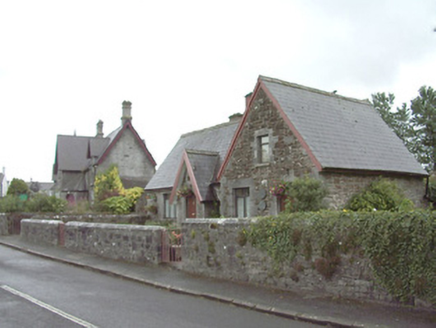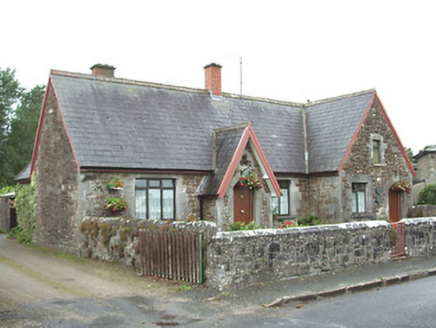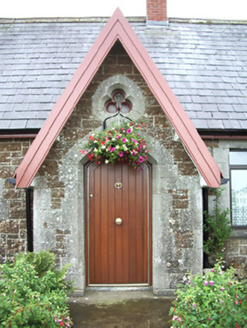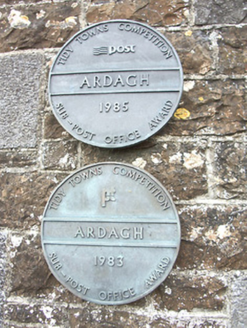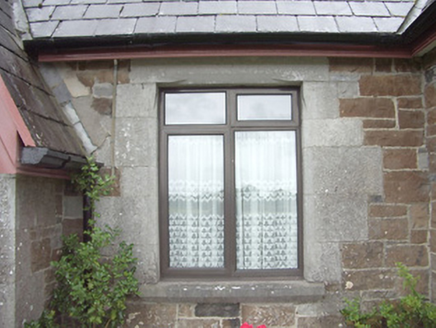Survey Data
Reg No
13312014
Rating
Regional
Categories of Special Interest
Architectural, Historical, Social
Original Use
Worker's house
Historical Use
Post office
In Use As
House
Date
1860 - 1870
Coordinates
220214, 268692
Date Recorded
28/07/2005
Date Updated
--/--/--
Description
Detached five-bay single-storey former estate worker's house on L-shaped plan, built c. 1863, having an advanced two-bay single-storey with attic level gable-fronted section to the north end of the main façade (east) and an advanced single-bay gabled porch offset to the south side of centre. Single-storey addition to the rear (west). Formerly in use as post office, now in use as private house. Pitched natural slate roofs, with rebuilt red brick (central) and rendered chimneystacks (rear pitch), cast-iron rainwater goods, and timber bargeboards to gables. Snecked rock-faced stone walls with dressed limestone quoins to the corners, and brass award plaques to former post office entrance. Square-headed window openings having chamfered dressed limestone block-and-start surrounds with cut stone sills, and replacement uPVC windows. Four centered arch entrance openings with dressed limestone block-and-start surrounds, and replacement timber battened doors. Trifoliated window opening to gable apex of entrance porch, with carved limestone surround. Set back from the road, with landscaped garden to front. Random rubble stone boundary wall to road frontage having chamfered dressed limestone coping, with wrought-iron gates. Located to the north of the centre of Ardagh.
Appraisal
This building type is characteristic of Victorian estate architecture, which is relatively rare in Ireland. It dates from a specific period of rebuilding and restructuring of the village of Ardagh in the early 1860s. It was erected to designs by the architect James Rawson Carroll (1830 – 1911), who carried out various works at Ardagh for Sir Thomas Fetherston (between c. 1860 – 1865) in order to improve the village as a memorial to his uncle, Sir George Fetherston. It is one of a number of houses, of varying designs, in the village of Ardagh that collectively represent one of the most interesting collections of its type in north Leinster. Its scale, the two entrances, its orientation towards Ardagh House (13312039) and its location between the former Church of Ireland primary school (13312013) and the former agent’s house (13312015) suggests that it may have been originally built to accommodate someone of importance within the Ardagh estate. Much character has been retained to this structure, and its former use as a post office is interesting for the social history of the village. The simple boundary walls complete the setting and add to this appealing composition.
